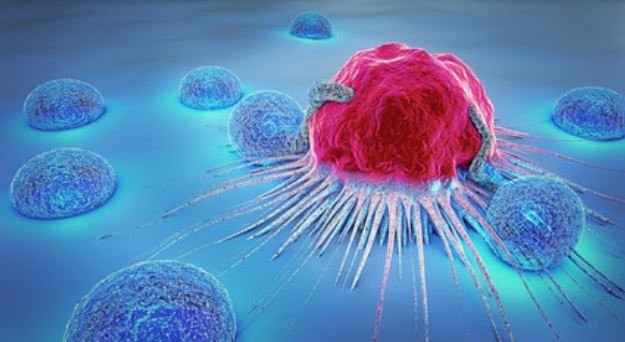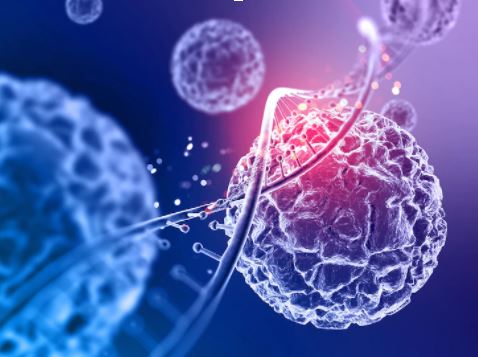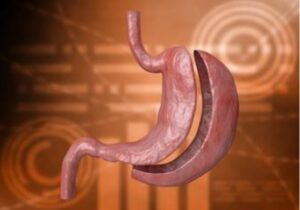Lung cancer is also the leading cause of death from cancer in both men and women.
However, due to reductions in smoking and advances in diagnosis and treatment, new lung cancer cases and deaths from lung cancer are on the decline.
According to Dr. Sandeep Nayak, who has an excellent cancer hospital in Bangalore, the most common type of lung cancer is adenocarcinoma of the lung, which is a type of non-small cell lung cancer.
Please continue reading to learn more about lung adenocarcinoma, its causes, and how it’s diagnosed and treated.
Contents
- What is Lung adenocarcinoma?
- What are the signs and symptoms of lung adenocarcinoma?
- Who is at risk for lung adenocarcinoma?
- Adenocarcinoma of the lung has several risk factors.
- How is lung adenocarcinoma identified?
- Staging-related tests
- What is the treatment for lung adenocarcinoma?
- Trials in the clinic
- Takeaway
What is Lung adenocarcinoma?
There are two predominant types of lung cancer:
- Non-small cell lung cancer (NSCLC)
- Small cell lung cancer (SCLC)
NSCLC is a much more common type of lung cancer, accounting for eighty to eighty-five percent of all lung cancers.
Lung adenocarcinoma is one kind of NSCLC.
“Also, Lung adenocarcinoma is the most typical kind of lung cancer, accounting for more than forty percent of NSCLC cases,” says Dr. Sandeep Nayak, Bangalore’s expert oncologist.
Platforms such as Practo and Clinicspots list Dr. Sandeep Nayak among the top oncologists in Bangalore.
The mucus-producing glands that stripe the borders of your alveoli, or tiny air sacs in your lungs, are where this cancer starts. It’s most commonly found in the lungs’ outer layers.
Lung adenocarcinoma can be further classified into subtypes based on factors such as:
- The tumor size
- How the cancer cells appear underneath a microscope
- Whether cancer has begun to overspread into other tissues
What are the signs and symptoms of lung adenocarcinoma?
Early-stage lung cancers, such as adenocarcinoma, are frequently asymptomatic.
In these cases, cancer may be discovered during a chest X-ray for another reason.
When there are symptoms, they can include:
- Cough that does not go away
- Shortness of breath Coughing up blood
- Wheezing
- Hoarseness
- Pain in the chest
- Fatigue
- Weight loss that occurs unintentionally
- Reduced appetite
Make an appointment with your doctor if you experience any of the symptoms listed above.
They can run tests to see if they can figure out what’s causing your symptoms. When lung cancer is detected and treated early, the prognosis is better.
Who is at risk for lung adenocarcinoma?
Cancer develops when your body’s cells begin to grow and divide uncontrollably. Changes in genes, particularly those that control cell growth and division, are to blame.
Although genetic changes can be inherited, they are more commonly acquired during one’s lifetime. This can happen due to cell division errors or damage caused by harmful substances in the environment.
According to genetic sequencing, over 70% of lung adenocarcinomas have acquired genetic changes.
As you might expect, many of these are found in genes related to cellular growth and division.
Adenocarcinoma of the lung has several risk factors.
Things that increase your chances of developing a disease are known as risk factors. There are several risk factors for lung adenocarcinoma that we are aware of.
Smoking is a significant risk factor for adenocarcinoma of the lung, as it is for other types of lung cancer.
Tobacco smoke contains thousands of chemicals, at least 70 of which have been linked to cancer.
People who do not smoke, however, can develop lung adenocarcinoma.
It is the most common type of lung cancer in people who have never smoked.
The following are some additional risk factors for lung adenocarcinoma:
- Increased age, with most lung cancers diagnosed in people over 65
- Lung cancer runs in the family.
- Exposure to hazardous substances in the environment or at work, such as:
- Secondhand smoke
- Diesel exhaust
- Silica
- Radon
- Asbestos
- Heavy metals
- Previous radiation treatment to your chest
How is lung adenocarcinoma identified?
Your doctor will first gather information about your medical history before diagnosing lung adenocarcinoma.
They’ll inquire about your symptoms, whether you smoke now or in the past, and whether you have a family history of lung cancer.
After that, they’ll conduct a physical examination. They’ll take your vital signs and listen to your lungs as you breathe at this point.
The following tests may be ordered to aid in the diagnosis of lung adenocarcinoma:
- Blood tests: Your doctor will use blood tests to assess your overall health:
- A complete blood count can tell your doctor how many different blood cells are in your body.
- Blood chemistry examines specific chemicals in the blood, such as glucose and electrolytes, to determine how well your liver and kidneys function.
- Imaging tests: Your doctor can use imaging tests to examine your lungs for signs of a tumor. There are several different types of imaging that can be used, including:
- Chest X-ray
- Computed tomography (CT) scan
- Positron emission tomography (PET) scan, which is often combined with a CT scan (PET/CT scan)
- Bronchoscopy: Your doctor will use a thin, flexible tube with a camera on one end to look inside your airways for signs of cancer during a bronchoscopy. Tissue samples may be taken as well.
- Sputum cytology: It is a procedure in which a doctor examines a sample of mucus under a microscope for cancer cells. Because adenocarcinoma of the lung is often found on the lungs’ periphery, this test may not be helpful.
- Thoracentesis: Your doctor will use a needle to remove a sample of the fluid from the space between your chest wall and lungs if it is present. It can be examined under a microscope to see any cancer cells present.
According to Dr. Sandeep Nayak, Bengalore’s outstanding oncologist, a lung biopsy is the only way to diagnose adenocarcinoma of the lung definitively.
If the tests indicate that lung cancer is possible, a biopsy will be taken from the affected area and examined under a microscope for cancer signs.
Proteins or genetic changes linked to lung adenocarcinoma can also be detected in this tissue.
If these are present, they can impact the prognosis and may be targeted for targeted therapy and immunotherapy.
If lung adenocarcinoma is discovered, additional tests are performed to help determine cancer’s stage.
Staging informs your doctor about the extent of your cancer’s spread and is crucial in determining treatment options.
Three factors are taken into account when staging NSCLCs such as adenocarcinoma:
- A tumor (T): It is defined by the size of the tumor and whether or not it has invaded the surrounding tissues.
- Lymph nodes (N): Whether cancer has spread to nearby lymph nodes
- Metastasis (M): Whether cancer has spread to more distant tissues like the brain and bones
Additional tests that may be used in staging include:
- Lymph node biopsy: A lymph node biopsy involves the removal of all or part of a nearby lymph node to see if cancer has spread to the lymph nodes.
- Endobronchial ultrasound (EBUS): A doctor uses a thin, flexible tube with a small video camera to create images of your lungs and nearby lymph nodes through your mouth and down your windpipe. The camera allows doctors to examine areas of concern on X-rays or scans in greater detail. This method can also be used to obtain doctors’ biopsy tissues or fluid samples.
- Magnetic resonance imaging (MRI) scan: An MRI scan can reveal whether cancer has spread to the brain or spinal cord.
- Bone scan: A bone scan can be used to determine if cancer has spread to the bones.
- Advanced bronchoscopy: Initial tissue collection can also be done using more advanced bronchoscopy techniques, such as:
- Robotic-assisted bronchoscopy (RAB) is a tool that helps doctors locate and collect tissue samples on the lung or lymph nodes.
- Electromagnetic navigation bronchoscopy (ENB) uses electromagnetic technology to obtain lung tissue samples.
What is the treatment for lung adenocarcinoma?
If you have lung adenocarcinoma, your treatment options will be determined mainly by the cancer stage.
Other factors that are also important to treatment selection include:
- Your age and overall health
- How well your lungs are functioning
- Whether specific markers are present on cancer cells
- Your personal preference
The following treatments for lung adenocarcinoma can be used alone or in combination:
- Surgery: Surgery can be used to remove cancerous tissue. Lung function tests will be performed beforehand to see if surgery is a good option for you because it involves removing parts of your lungs. Nearby lymph nodes may be removed as well.
- Radiation therapy: If surgery isn’t an option due to the extent of cancer, radiation therapy may be used. It’s also effective as neoadjuvant or adjuvant treatment.
- Chemotherapy: When surgery isn’t an option, such as when cancer has spread to nearby tissues or metastasized, chemotherapy may be used. It may be combined with radiation therapy in some cases. Chemotherapy may also be used before surgery to shrink a tumor (neoadjuvant therapy) or after surgery to help kill any cancer cells that remain (adjuvant therapy).
- Immunotherapy: Immunotherapy helps your immune system respond to cancer cells. It’s typically used to treat advanced lung adenocarcinoma. For lung adenocarcinoma, immunotherapy options include:
- Nivolumab (Opdivo)
- Pembrolizumab (Keytruda)
- Atezolizumab (Tecentriq)
- Durvalumab (Imfinzi)
- Targeted therapy: Targeted therapy uses drugs to target specific markers found in cancer cells. It could be used if your cancer has specific markers that these drugs target. The following are some examples of targeted therapy drugs:
- Monoclonal antibodies like bevacizumab (Avastin) and ramucirumab (Cyramza)
- Tyrosine kinase inhibitors like erlotinib (Tarceva) and gefitinib (Iressa)
- Kinase inhibitors that target specific gene change like dabrafenib (Tafinlar), trametinib (Mekinist), and ceritinib (Zykadia)
Trials in the clinic
“Doctors and researchers are still developing newer, more effective treatments for adenocarcinoma of the lung,” says Dr. Sandeep Nayak, whose among the best oncologist in Bangalore
New targeted therapy or immunotherapy drugs and new ways to use existing treatments are examples.
These new treatments must be tested in clinical trials before being used on a larger scale.
Consult your healthcare team if you’re interested in participating in a clinical trial.
They can assist you in locating one that you would be a good fit for.
Takeaway
Lung adenocarcinoma affects mucus-producing cells and is a type of NSCLC. It’s the most common type of lung cancer to be diagnosed.
The most critical risk factor for lung adenocarcinoma is smoking. It can, however, develop in people who have never smoked, such as:
- Age
- Family background of lung cancer
- Toxic exposure to certain substances
In general, adenocarcinoma of the lung has the best prognosis when diagnosed and treated early.
As a result, if you start to experience symptoms like:
- Cough that does not go away
- Breathing problems
- Pain in the chest




